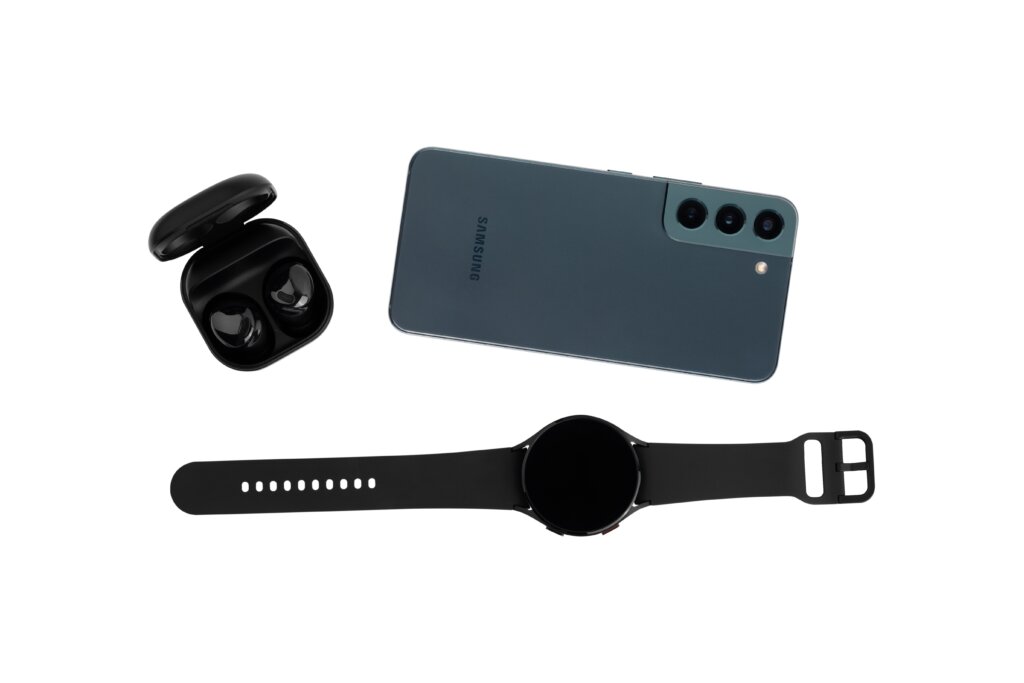
Stacked batteries are set to charge up the smartphones industry. (Source – Shutterstock)
How stacked battery technology is charging up the future of smartphones
|
Getting your Trinity Audio player ready... |
- Stacked batteries may boost future iPhone and Samsung performance.
- New battery tech could revolutionize smartphone charging and lifespan.
Dealing with a rapidly depleting smartphone battery is a widespread frustration, particularly when one lacks immediate access to a charger. This issue, prevalent worldwide, could soon see a drastic change with the advent of a new power solution type: stacked battery technology.
But what exactly is this new type of power solution? Essentially, stacked battery technology represents an innovative method of arranging a battery’s internal components. Instead of a conventional flat-layered configuration, this technique stacks components on top of each other. It’s comparable to a multi-level parking garage versus a single-level one – vertical space is being used more effectively to accommodate more power.
Within the architecture of a stacked battery, positive and negative electrodes, known as anodes and cathodes respectively, are layered with other critical components. An electrolyte separates each layer, acting as a conduit for ions to migrate between electrodes, thus generating an electrical current.
The primary advantage of this stacking technique is its capacity for a higher energy density within the same volume, implying that a device can store more power. Additionally, it may potentially enhance the battery’s efficiency and longevity.
The shift towards stacked battery technology symbolizes a radical break from customary battery configurations, and holds the potential to revolutionize the future of electronic gadgets, especially smartphones. This inventive response to the increasing power needs of advanced, energy-intensive devices implies that future smartphones could cope with our expanding digital requirements with stacked battery technology.
iPhone 15 and the rumored new battery type
But is the technology already on the market? Rumors suggest that the iPhone 15 will incorporate a ‘stacked battery’ that could provide enhanced heat management and overall battery performance. A leak has indicated that this major technological shift could be a significant advantage for the iPhone 15.
With the anticipated launch of iPhone 15 and iPhone 15 Pro models later this year, Apple reportedly plans several changes to both the external and internal design. Internally, the plan is to replace the Mute Switch components with a mechanical button similar to the Volume and Power Button. However, this is temporary, as the company intends to transition to solid-state buttons.
Renowned Android leaker, @RgcloudS, tweeted about the development of stacked batteries in Samsung devices while commenting on Apple. Although Samsung is reportedly “on track” to introduce stacked batteries for smartphones, the leaker asserts, “Apple used it on the entire iP15 lineup,” referring to the iPhone 15.

Android leaker, @RgcloudS, tweeted about the development of stacked batteries. (Source – X)
If accurate, this could yield several benefits for the iPhone 15 range in terms of power, including faster charging, greater capacities, and significantly extended battery life.
The iPhone 14 currently supports a maximum charging speed of 30W, so a jump to 40W would be substantial. However, it’s uncertain if the new technology will be integrated into the iPhone 15, as some speculate it might be reserved for the iPhone 16. There’s also speculation that Apple’s transition to USB-C could have contributed to increased charging speeds for future iPhones.
One definite possibility for the anticipated increase in charging speeds for the iPhone 15 is the implementation of the stacked battery pack, suggesting that Apple may have found a solution to the overheating problem that can occur under such circumstances. However, it’s important to note that a 40W charging speed still lags significantly behind industry-leading speeds of over 100W.
Apple isn’t the only player investing in this innovation. Samsung is also exploring stacked battery technology for its upcoming Galaxy S24 series. The leaker RGcloudS hints at introducing a new battery type developed by Samsung’s SDI division, promising faster and more reliable charging by applying the sophisticated stacked structure, typically used in electric cars, to Android smartphones for the first time.
Reportedly, the new batteries in the Galaxy S24 will not expand, being resistant to shock and offering extended operating times. But this innovation comes at a price, as another Twitter user, @korean_riceball, revealed that the cell stacking process has a low yield rate and necessitates substantial investment in new machinery.
Although Samsung has the resources to commence production of these batteries, the cost per unit might exceed that of the cells used in the Galaxy S23 lineup. The tweet did not specify whether the Galaxy S24’s battery life will improve with the same capacity or if Samsung needs to improve the efficiency of other components and software optimizations to enhance battery endurance.
Beyond smartphones: Where else can we see stacked batteries being used?
The broader implications of stacked battery technology extend beyond smartphones, with potential applications spanning various industries. Consider other portable electronics such as laptops, tablets, and drones, which could benefit from enhanced energy density and longer battery life, increasing their portability and usage times.

The role of the new battery type in different verticals. (Source – Shutterstock)
Electric vehicles (EVs) are another prime candidate for stacked battery technology. Given the central role that battery technology plays in the range and performance of EVs, stacked batteries could allow for a higher energy density within the same volume. This could lead to increased range, improved efficiency, and potentially longer overall battery life. In fact, Samsung’s SDI division is already employing stacked structures typically used in electric cars for their smartphone batteries, indicating the potential crossover between these sectors.
Wearable tech, such as smartwatches, fitness trackers, and augmented reality (AR) glasses, could also greatly benefit from this innovation. These devices often have strict space constraints, so storing more power in the same or even a smaller footprint could significantly enhance their functionality and usage time.
While this innovative technology is currently being discussed in the context of smartphones, its implications are far-reaching. As the tech continues to be developed and refined, we can expect stacked batteries significantly impacting a broad spectrum of electronic devices and industries.
READ MORE
- Safer Automation: How Sophic and Firmus Succeeded in Malaysia with MDEC’s Support
- Privilege granted, not gained: Intelligent authorization for enhanced infrastructure productivity
- Low-Code produces the Proof-of-Possibilities
- New Wearables Enable Staff to Work Faster and Safer
- Experts weigh in on Oracle’s departure from adland


